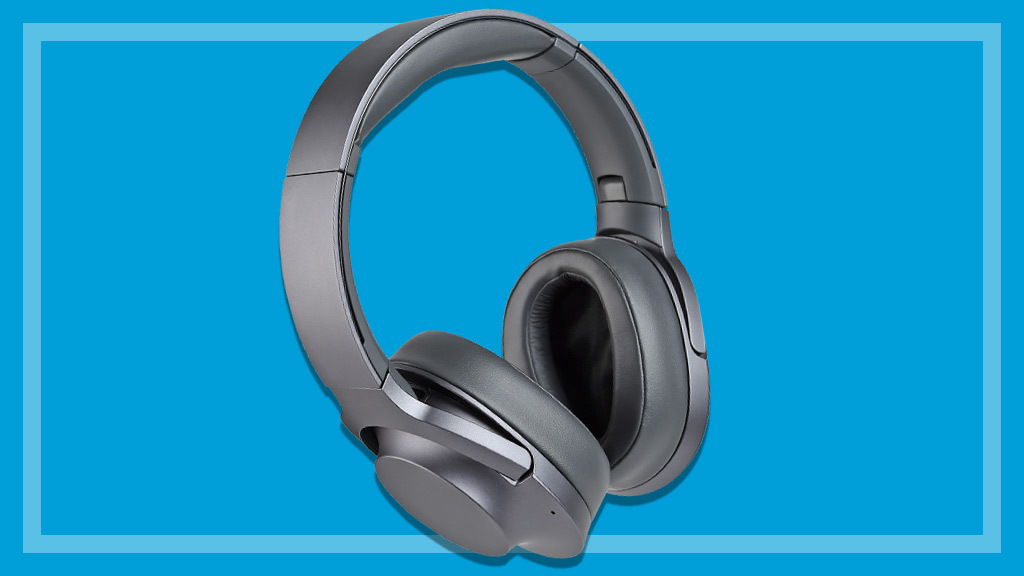Get our independent lab tests, expert reviews and honest advice.
What to know before buying new headphones

These days a pair of high-quality headphones or earbuds is a must-have audio accessory. But what are the different types? And more importantly, how do you know if they’ll provide good sound? We walk you through the options so you can find the best pair for you.
On this page:
Headphones and earbuds: what’s the difference?
Headphones generally fall into one of two categories.
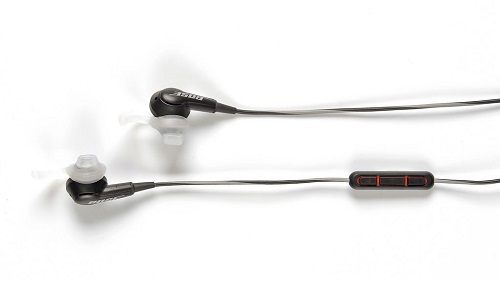
Earbuds fit at least part way inside your ear canal, sometimes also clipping onto the ear. They’re commonly called in-ear headphones or earphones.
Earbuds are compact, relatively unobtrusive and can be stored in a pocket or purse. They can be relatively inexpensive or you can spend a couple hundred dollars. Some come in a round-the-neck or clip-on ear style for use while exercising, and a wireless version can give you an even better experience while working out.
However, you probably won’t get the best audio fidelity to start with, and the delicate wires for some models can be damaged with continual wrapping/unwrapping, which can compromise sound quality. It’s also difficult to block out ambient noise unless you use more expensive in-ear buds specifically designed for noise cancellation and isolation.
The smaller size also means that wireless and noise-cancelling earbuds typically have a shorter battery life than on-ear/over-ear headphones. They also can’t accommodate buttons so you need to use touch or voice controls, which can be fiddly.
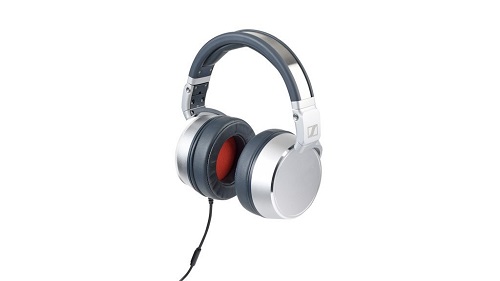
Headphones sit over your head and come in over-ear (or around-the-ear) and on-ear styles. Sometimes they’re colloquially called ‘cans’.
The larger size usually means that you’ll get better sound reproduction than with in-ear headphones. They can limit ambient noise more effectively and can be hung around your neck when not being used. Wireless and noise-cancelling headphones usually have longer battery life than earbuds, and some support physical buttons rather than touch controls which can be easier to use.
But headphones can be much bulkier than earphones. They can easily get dirty if you don’t also carry a case for them when not in use and they tend to cost more than earphones.
Are over-ear or on-ear headphones better?
Let’s drill down on over-ear and on-ear headphones and how they differ.
Over-ear/around-the-ear (circumaural) headphones completely surround your ear, and may provide added passive noise-cancelling properties, much like ear muffs. The around-ear cushion may also help make them more comfortable to wear for long periods. The downside is you might find they get hot and sweaty after using them for a while and they’re often large and bulky to store and carry. The weight of the headphones, good padding and tension adjustment are important for long-term comfort, as is the tightness of the spring band that holds them to your head.
On-ear (supra-aural) headphones are generally smaller and therefore easier to store and transport. They rest on the outside of your ears, allowing more airflow around them. However, they may keep out less ambient noise. They also press directly on the ears rather firmly so can become uncomfortable fairly quickly.
Before you buy a set, try them out instore and leave them on for as long as you can (if the store allows) to get a sense for how they feel.
Open back vs closed back headphones
Both on-ear and over-ear headphones are available with open or closed cups, aka backs. This mainly refers to whether the cans are designed to allow airflow into the speaker drivers.
Open-back headphones let air flow through which essentially improves audio clarity and creates a more natural sound, particularly in the lower frequencies, but this reduces their noise-cancelling capabilities and increases the risk of moisture and dust getting into the components. They’re a good option for listening to high-quality audio at home.
Closed-back headphones are sealed off, which makes them much more effective at blocking out environmental noise, but the sound quality isn’t quite as good, including the low-end. They’re best for day-to-day use especially in noisy environments like public transport or on an airplane.
Wired vs wireless headphones
Headphones connect to audio devices via a cable, Bluetooth or other proprietary wireless system in the case of some TV-specific models. Each has its pros and cons, but your decision will be based on the input options supported by your device, and audio quality (especially if you’re something of an audiophile). Some headphones support both wired and wireless connectivity.
Wired: The classic cable that plugs into the headphone jack. It’s better quality than Bluetooth, generally speaking, and ensures a clear connection that isn’t prone to dropouts. They also don’t use a battery. But cables can get in the way, tethering you to your device, and lower quality models can break easily.
Wireless: These headphones/earbuds sync with devices that support a Wi-Fi or Bluetooth connection. The connection options will be noted in the specs, but almost all wireless headphones use a version of Bluetooth. Though convenient, maintaining this connection will drain battery life in the headphones and your smartphone/portable music player.
And despite the name, the left and right cans/buds are connected via a cable or headband. Wireless just refers to the connection between the headphones and your device. Some wireless over-ear/on-ear headphones include a cable input so you can switch to a physical connection if you prefer.
What are true wireless headphones?
True wireless headphones are essentially identical to wireless ones, except the earbuds are not connected by a cable (think Apple AirPods). Instead, one bud connects to your device which sends the signal to the other bud, or they sync via two independent signals. These get rid of cables altogether, but that makes them much more prone to interference in busy areas (e.g. public transport) and they’re quite easy to misplace and damage.

Wireless connection types explained
Though Bluetooth is more or less the default wireless connection option, there are a few different versions available. Some are of varying quality and only supported by certain headphones and devices (like phones and laptops) with their own advantages and disadvantages. Below is a list of all the major versions but you need to check the specifications on your headphones and connected device to see what’s supported.
We’ve listed the main wireless connection/encoding options below.
- Bluetooth (SBC): Near universal support. Introduces audio compression which will cause a drop in quality, though you probably won’t notice if you’re streaming Spotify from your smartphone.
- Bluetooth (AAC): Advanced audio coding, the default setting used by Apple software and devices, and YouTube. You can find it in almost every Apple audio product, and it’s becoming more common in Android devices too. The quality is a bit better than SBC, but compression is still present.
- aptX: The beefy version of Bluetooth that introduces considerably less compression than SBC and AAC, with quality closer to CD, albeit at a cost. The amount of data flying around can introduce latency and slam battery life. Though most new Android devices can decode aptX, it’s not very common in headphones due to licensing costs. Very few Apple devices support aptX.
- aptX-HD and aptX-LL: AptX HD is a near lossless (CD quality) version of aptX, while aptX-LL (low latency) includes inbuilt latency compensation to combat audio lag. These are reserved for high-end equipment.
We haven’t included the ever-growing list of proprietary codecs as they only cover a very small percentage of the market. If you see wireless specifications on the box that aren’t listed here, head to the manufacturer’s website for more information. Also, aptX, aptX-HD and aptX-LL may not be turned on by default. You can usually find this in the Bluetooth options of your device and the headphone’s app.
Please note: This is a general overview that does not factor in outside variables including the hardware in your playback device, its age, headphone build quality, audio source quality (e.g. CD, mp3, FLAC, streaming service) and codec support. The definitions of ‘good quality’ and ‘good enough’ are subjective, so this explanation should be used as a starting point to help you find headphones that suit your needs.
How to pair Bluetooth headphones
The specific pairing process varies depending on the brand and model of your headphones and the device you’re using, but the basic steps are almost always the same. You need to activate pairing/scanning mode on the headphones and your device.
First, turn on your headphones’ pairing mode. This usually involves holding down the Bluetooth button, or pressing the touchpad, for three to five seconds. You should hear a prompt such as a noise or voice that says ‘pairing’. The headphones will then scan for another Bluetooth signal for about 10–20 seconds, but check the instructions for the exact process.
While the headphones are scanning, open the Bluetooth settings on your device (smartphone, tablet, laptop etc.) and look for an option called ‘Pair’ or ‘Add new device’. Tap it and it will list all available devices nearby. Find the brand and model of your headphones, tap it and the two should pair after a few seconds. Once paired, they should automatically reconnect from then on.
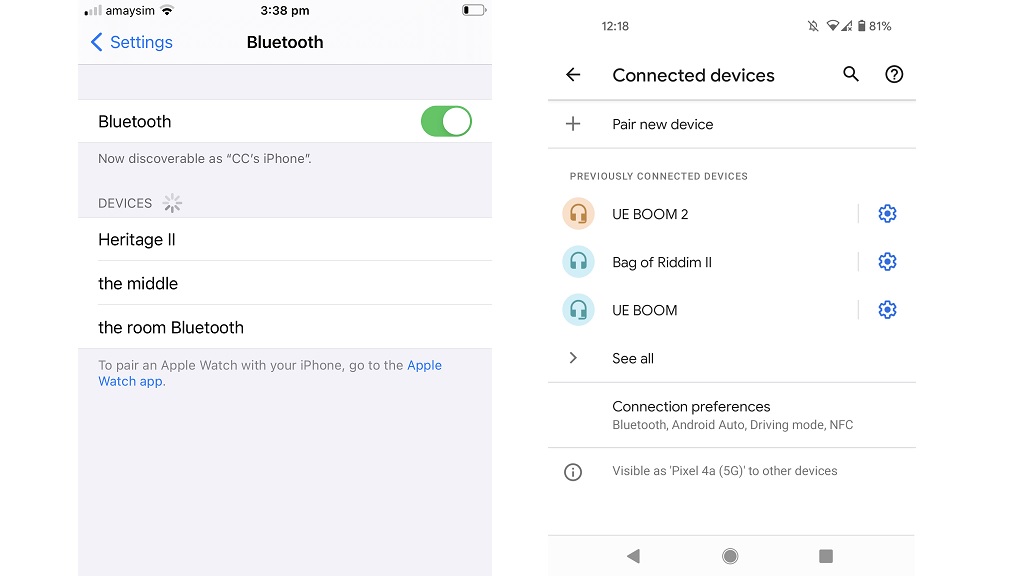
Can you use wireless headphones on a plane?
You can use your Bluetooth headphones on a plane, even in flight mode, but the process is a bit fiddly. Flight mode turns off your mobile network and all wireless connectivity, as required by all airlines. But you can turn Bluetooth back on in the settings and it will function as normal without causing interference. If you usually enjoy listening to your music on streaming services, you may need to download some of your favourite playlists to your smartphone to enjoy on the flight.
In-flight entertainment isn’t as easy. You’ll need to buy a Bluetooth adaptor that fits the weird two- or three-pronged armchair input that can sync to your headphones. Though these exist, we haven’t tested them so we can’t comment on their sound quality or how easy they are to use.
How do noise-cancelling headphones work?
There are two types of noise-cancelling headphones: passive and active. Passive noise cancellation blocks noise from getting in by forming a snug fit around or inside your ear, kind of like ear muffs. Active noise cancellation is quite different.
Without getting too technical, all you really need to know is that sound travels in waves. You can cancel out sound in a recording by duplicating and inverting the waveform, before putting the two against each other. Active noise-cancelling headphones basically do the same thing on the fly. They have built-in microphones that capture the environmental noise and invert the wave to cancel it out.
Many modern headphones let you adjust the level of noise cancellation, either through buttons or touch controls or in an accompanying smartphone app. Mid-level cancellation, for example, will let in some noise which can be a useful safety feature if you’re walking near a busy road.
It’ll chew through the headphones’ battery, so keep that in mind if you’re heading out on a long trip. You can usually turn off noise cancelling to extend battery life.
Things to consider when shopping for headphones
Battery life: Long battery life is important if you travel a lot (including public transport) and if you want to use wireless connectivity and active noise cancellation. Over-ear/on-ear headphones tend to have a longer battery life than in-ear headphones. Models with detachable cables may keep working if the batteries die, but you’ll lose wireless connectivity and active noise-cancelling features. The carry case that comes with true wireless headphones almost always has a battery for charging on the go.
Cable converters: Converters let you plug wired headphones into a range of devices that support AUX 3.5mm, USB-A and USB-C.
Cable length: This should be long enough to allow you to reach a music player or aircraft sound plug connection comfortably without entangling you in excess wire.
Carry case: Try to find headphones with a hard case as this will provide the best protection during travel. Soft cases can keep everything together, but they won’t really protect the headphones.
Controls: There are a number of control options and it’s up to you to find one that suits your needs. Some buttons are on the cable, others are built into the side of on-ear/over-ear headphones, and many use touch controls instead. You can even find some that support physical and touch controls. These are usually used for things like volume, pausing, skipping songs and answering calls. Touch commands can be fiddly and unresponsive at times.
Detachable cable: Some wireless cans have a cable input so you can switch between wired and wireless mode when needed (like when the battery dies).
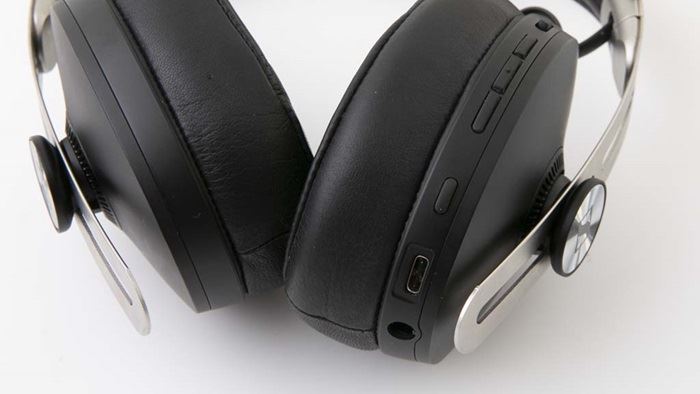
Foldability: Foldable headphones are handy if you travel a lot. Just make sure that the joints don’t catch your hair.
Leakage measurements: This is where sound escapes the headphones and can be heard by others in your vicinity. Open headphones tend to leak more sound than closed models with a solid outer casing. Some listeners prefer the airier sound of an open design as it allows you to hear some of the outside noise, while others find the audio isolation of the closed models more important.
Microphone: A microphone gives you the option to make and answer calls and issue voice commands without having to get your phone out of your pocket.
Replaceable parts: It’s easy to lose the ear canal fittings in ear buds and the pads around on-ear/over-ear headphones can get damaged over time. Good headphones should allow these to be replaced and parts should be readily available at retailers or via the manufacturer’s website.
Voice commands: These let you communicate with digital assistants such as Alexa, Google Assistant or Bixby. You can use them to pick songs, make calls or even ask about the weather. Some headphones have built-in support for these whereas others need to piggyback off your phone. The only real difference is built-in support yields faster results as the headphones can handle the processing.
Tips to protect your hearing
Most of us can expect to lose the ability to hear some frequencies as we age. Excessive noise – including music volume – can speed up this process and result in serious hearing loss if we overdo it.
You can help protect your hearing by following these tips.
- If you’re listening to music on standard headphones or earphones and can’t hear a normal conversation about a metre away, your volume is likely too loud.
- Noise-cancelling headphones can cut out external sounds, so you need to monitor your audio volume.
- Cutting out ambient noise can also be dangerous, as you can’t hear what’s happening around you. It’s unwise, for example, to wear headphones or earplugs of any sort while driving.
- Good quality headphones and earphones can help save your hearing by producing higher-fidelity sound that allows you to experience more audio detail at lower volumes, so you don’t need to crank up the volume too loud.
- Some audio players, including smartphones, let you set the volume limit so audio can’t be played too loudly. Apps are also available which can set volume limits to protect your hearing. Check the online app store for your device to see what’s available.
Can you wear headphones while driving?
There aren’t any state or territory laws that specifically prohibit fully licensed drivers from wearing headphones while behind the wheel, but they can work against you in the event of an incident.
States and territories have broad rules about maintaining proper control of the vehicle and removing any distractions. Headphones can be considered a distraction and may be considered the cause of an accident by police. This is because the idea of what constitutes proper control and distractions is often left up to police discretion.
If you’re using headphones to answer phone calls, then they may fall under specific smartphone legislation. This can make things particularly dicey for learner and P-plate drivers, depending on which state you’re in, as some states and territories specifically prohibit learners and P-platers from wearing headphones while driving.
If it’s absolutely necessary to wear headphones while driving, try to use a single bud in one ear instead of blocking both.
Our car GPS buying guide has a full breakdown of the smartphone legislation for each state and territory.
What about cycling?
Like driving, there aren’t any laws prohibiting headphone use while riding a bike. However, road safety rules for drivers also apply to cyclists, which includes distractions and proper control of the vehicle.
How to clean your headphones
Headphones get the double whammy of being exposed to all the bodily gunk that’s in and around your ears and everything floating around in public. You should give them a good clean every now and then.
You can clean earwax from your in-ear headphones by gently scraping it out with a needle or toothpick. Be very careful, as you can easily pierce and permanently damage your headphones if you’re too rough, or push the earwax deeper into the electronics.
If this doesn’t work, lightly push some Blu Tack against the hole and pull it up. The earwax should cling to it and lift right out. Again, don’t be too rough as the Blu Tack can become stuck quite easily. If your earbuds have removable silicon fittings, take them off and give them a wipe with a damp cloth.
You can clean the wires and outside of the earbuds, or over-ear headphones, with alcohol wipes. Be careful using these on the pads as they may degrade the lining. Gently brush away anything that’s accumulated inside the headphones.
How to dispose of old headphones
Don’t put old or broken headphones in the bin. There are lots of sustainable alternatives such as donating, fixing or recycling them.
Donate them
If your old headphones still work then they can be re-homed. But give them a good clean as per the suggestions above. You wouldn’t want someone else’s body gunk in your ears, would you?
Friends and family are always a good start and you can also try online marketplaces like Gumtree. You’ll probably have no trouble shifting them if you put them online for free.
Some charities also accept headphones but it’s worth phoning ahead to make sure. Most retailers don’t let you try headphones before you buy for health and safety reasons (especially earbuds) and charities may not want to sell used ones for the same reasons. Salvos Stores accept electronics but don’t have any specific rules about headphones, whereas the Red Cross won’t take headphones at all.
Repair them
The padding around on-ear/over-ear headphones, and silicon tips in earbuds, can get damaged, degrade or go missing. Fortunately, most manufacturers sell these replacement parts on their website. Have a look online or ask for more information from the retailer.
Rechargeable batteries also degrade over time, and a pair of buds that once lasted four hours on a single charge may only last as long as 40 minutes after a few years. Most headphones are sealed shut leaving you with no option but to get them professionally repaired, while others can be fixed with a little bit of work.
Coin cell or lithium-ion batteries can be replaced with the help of a YouTube video and some DIY tech know-how, but it’s intricate work that could damage your headphones and will absolutely void your warranty. We’re not saying you should do this, but the information is out there (like for these Sony earbuds).
Recycle them
The Recycling Near You database will show you where to find e-waste services in your area, and they may accept old headphones. If not, most local councils are likely to take them during e-waste drop-off events that happen throughout the year. For example, the NSW Inner West council (where CHOICE is located) accepts entertainment appliances. Check your local council website or give them a call to find out if headphones can be dropped off in your area.
We contacted TechCollect and Mobile Muster to see if headphones are considered accessories under their recycling schemes, but neither confirmed. You can always try contacting a TechCollect drop-off point, such as Officeworks, to ask if they’ll take your old headphones. You can also reach out to Mobile Muster directly.

